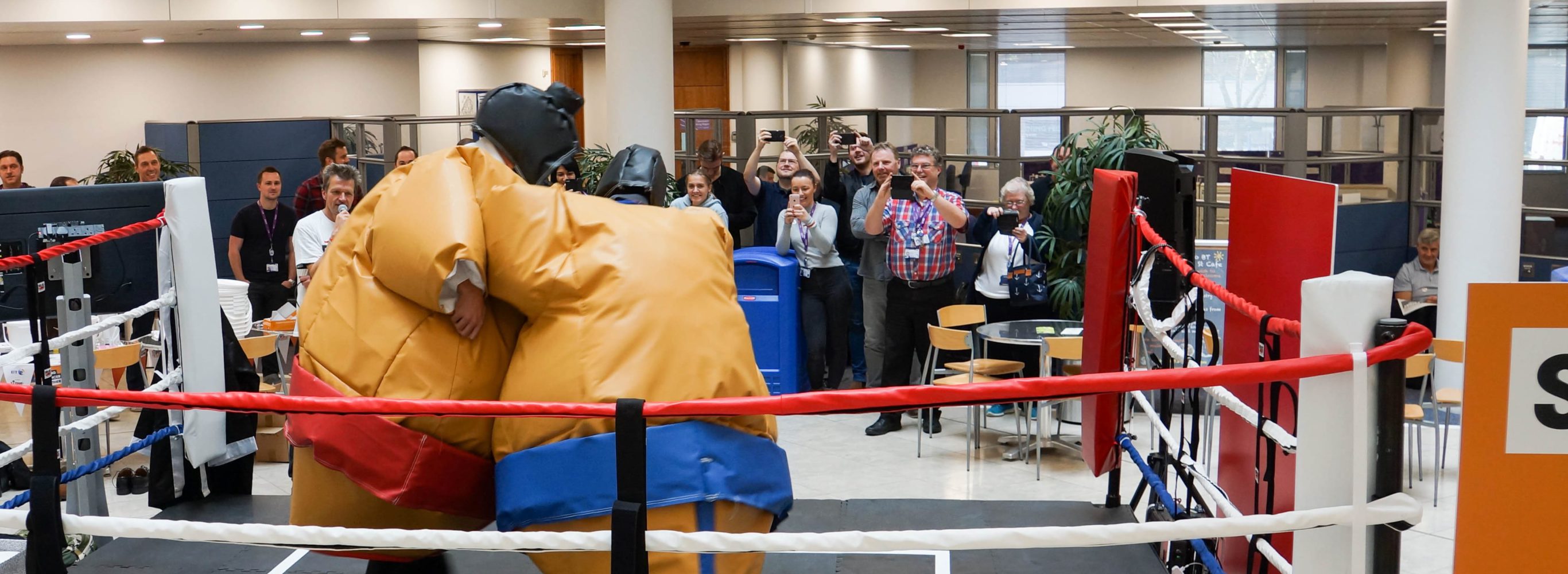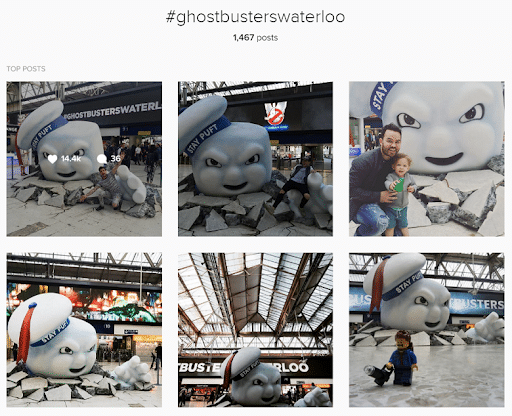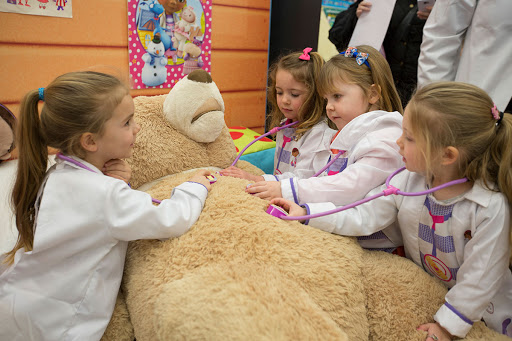Increasing customer engagement with experiential marketing

According to a Mosaic and Event Marketer EventTrack study, 84% of brands have used experiences and events to promote their products and services.
In a world where people are becoming increasingly cynical of brands; it’s never been more difficult, yet crucial, for brands to create meaningful, long-lasting impressions – and that’s where experiential marketing campaigns come in.
Integrating seamlessly with your other marketing channels, experiential marketing can aid with launching a PR stunt, bringing an advertising campaign to life and even enabling your customers to sample new products.
However, there are many brands who remain sceptical, due to the concerns of these campaigns, if they’re not planned out properly.
If you’d like to launch your own experiential marketing campaign, but aren’t sure how to make it a success, then you’ve come to the right place. Here, we’ll discuss what experiential marketing campaigns are, some issues to avoid, and examples of successful campaigns.
84%
of brands have used experiences and events to promote their products and services.
What is experiential marketing?
Experiential marketing campaigns can incorporate everything from roadshows and festivals, to live experiences, PR stunts, partnerships and so much more.
The aim of experiential marketing is to get to the heart of what motivates your customer; whilst showcasing your brand as relevant, useful and desirable.
By provoking, challenging and inspiring people, successful experiential marketing campaigns can drive loyalty, whilst producing other tangible results.
With an ever-increasing amount of content on the internet, brands are turning to experiential marketing to capture the attention of their audience – in fact, 67% of B2B marketers expect their budget to increase over the next 18 months for this area.
Furthermore, AgencyEA’s State of Experiential Study found that 92% of branding experts thought that the integration of events and experiences into sales and marketing was crucial for success.
Concerns about experiential marketing campaigns
Like with many creative projects; some marketers – or their stakeholders – have reservations about experiential campaigns; which can stop them from being run in the first place. However, these issues can easily be overcome.
Difficulty measuring success
Similar to a content marketing campaign, there is no one-size-fits-all metric for measuring experiential marketing.
The fact is, these campaigns often cover a range of channels, including offline and online; which means that each channel will need to have a tailored strategy for tracking.
Set your goals before you begin your campaign, as that could affect your idea in the first place. For example, is it brand awareness you want to measure? Or perhaps it’s social media follows, or traffic to your website? You will probably also want to track leads and conversions.
Whilst it can be difficult proving ROI to stakeholders, it’s important you’re open and honest about your goals. The first campaign is always the most difficult to get signed off – once you’ve had one successful campaign, it’s so much easier to obtain buy-in – especially if you can prove the value of loyalty and awareness, to people who are numbers-driven.
Lack of creative ideas
So many people think that creativity is a talent you’re born with; but the truth is, you can learn how to be creative.
We find that the key to being creative is to get away from your desk – sit in a breakout space, go for a coffee or a walk and clear your head.
It’s also useful to gather a group of colleagues together to brainstorm potential ideas. From there, you’ll have a bank of ideas that you can flesh out. Also, don’t discount the value of Reddit – run your idea past your target market to see if it’s something they’d be interested in before you do the legwork.
Of course, budget and time will play a part; but some of the best experiential marketing campaigns had minimal time and money behind them.
Not necessarily well-targeted
It can be all-too easy to look at how a successful campaign for another brand has run, and recreate it – but if it’s not tailored to your customers, it’s not going to work.
Like every other aspect of your marketing channel, an experiential campaign that doesn’t resonate with your target market will fail; and that’s why the ideation stage is so crucial – especially when it comes to sense-checking ideas with your target audience.
Experiential marketing examples
These experiential marketing examples are proof that by creating a fun, and memorable experience, you can form a closer bond with your consumers, and help to drive loyalty and conversions.

Image source: Econsultancy
Ghostbusters movie: Marshmallow Man
Back in 2016, London commuters were surprised to see the Stay Puft Marshmallow man emerging through Waterloo station’s concourse floor.
Using the hashtag #ghostbusterswaterloo; commuters were unable to resist the photo opp, making it a huge hit on Instagram.
Forbidden Planet also took part in the fun, running a pop-up shop in Waterloo that looked like a New York subway station, enabling people to purchase souvenirs and movie tickets.

Image source: Hotcow
Doc McStuffins’ check-up clinic
This Disney Channel TV show not only promoted their second series, but increased merchandise sales by 5.3% in 2014 by recreating Doc’s clinic in Toys R Us, Smyths and Tesco stores across the UK.
The 8,000 children who visited took part in a ten minute, immersive experience where they pretended to be Doc, and diagnosed Big Ted. Once they’d passed their exam, they received a free Doc McStuffins certificate.
Each “clinic” also had a waiting room, where children could play with the new merchandise, and get free colouring-in sheets.
IKEA sleepover
Thanks to the Facebook group “I wanna have a sleepover in IKEA”, IKEA allowed just that; sopening up its Essex store in 2011 for one night only.
100 of the 100,000 group members spent a night in the warehouse; and were treated to manicures and massages, and even had a bedtime story read to them!
On the night, a sleep expert was on-hand to provide people with advice, and help them to choose a new mattress in a bid to boost sales.
BT fighting cancer together
Our client BT has a long-standing partnership with Cancer Research UK, and their annual event, Stand Up To Cancer.
We created an experiential internal campaign to engage and educate BT’s employers, bringing the ‘fighting cancer together’ theme to life through an interactive game, online survey and campaign site on the company’s intranet; before travelling across the company to host a series of roadshows.
Whilst the campaign was designed to be fun, it successfully delivered a very serious message, prompting people what they could do today, to take on the risk of preventable cancers and win.
The campaign engaged over 100,000 BT people across the world, raising over £130,000 in the process.
Final thoughts
If you want to run an experiential marketing campaign simply because you think it’s “cool” or “quirky”, then don’t invest the time. You need to ensure that it’s going to be of interest to your potential customers, and drive the engagement that you want it to.
The Mosaic and Event Marketer study asked brands who had previously run experiential campaigns, on how they thought future campaigns could be even more successful; and these are the points they came up with:
- Continue to capture data and improve measurement metrics
- Generate and leverage content relating to events and experiences
- Be more strategic and plan ahead
- Create more experiential activities
- Leverage the use of technology
If you’d like help with running an experiential marketing campaign, or want to drive engagement through brand activation, get in touch, we’d love to help. Alternatively, for the latest branding, design and digital marketing news, head on over to our Articles page.